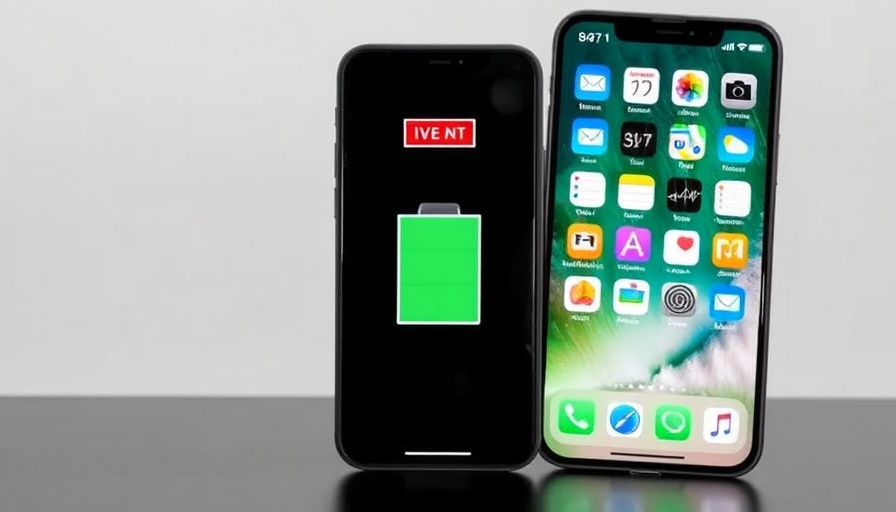
Can Slowing Down Your iPhone Boost Battery Life?
Apple's latest iOS 26 introduces a new feature called Adaptive Power Mode, designed to extend battery life without significantly compromising performance. As more users seek ways to maximize their device's lifespan, this feature may hold the key. But will it slow down your iPhone?
Understanding the Mechanics of Adaptive Power Mode
Apple states that Adaptive Power Mode adjusts the device's performance based on usage patterns to conserve energy. This mode may gradually decrease processing speeds in less demanding tasks, giving you longer usage time in return. But it is vital to weigh the benefits against potential downsides.
Real-World Testing: My Journey with iOS 26
In my recent outdoor excursion, I toggled on the Adaptive Power Mode and closely monitored the effects on my iPhone's performance and battery usage. From navigating trails to taking pictures, I experienced minimal lag, making my activities uninterrupted. After several hours of use, I noted that my battery remained much healthier than in prior outings.
The Performance Trade-Off: Worth It?
Overall, I found that the performance impact was minimal—far less noticeable than if I had opted to conserve battery with the brightness turned down or background apps closed. Given that the iOS 26 public beta is still a work in progress and may crash occasionally, this synergy between battery preservation and acceptable performance raises questions about future updates and refinements.
Comparing Adaptive Power Mode with Other Battery-Saving Strategies
Historically, users have resorted to traditional battery-saving techniques such as turning off location services, reducing screen brightness, or avoiding multitasking. However, Adaptive Power Mode exploits the smartphone’s existing capabilities, potentially offering a more integrated solution.
Opposing Views: Does Battery Management Lead to Software Issues?
Some tech experts argue that while features like Adaptive Power Mode are advantageous for battery life, they may introduce software instability as seen with previous updates. The crux of the concern revolves around whether reducing energy consumption might lead to increasing system crashes or bugs. While this remains a point of contention, user feedback will likely influence Apple's roadmap moving forward.
The Benefits of Embracing Adaptive Power Mode
For everyday users, the sheer potential of improving battery life without sacrificing substantial performance is promising. In an age where smartphones are essential, having the capability to last longer between charges can provide added peace of mind, especially during demanding travel or extended outings.
Conclusion: Should You Enable Adaptive Power Mode?
Apple’s Adaptive Power Mode in iOS 26 is a practical solution that seems to offer worthwhile advantages for those concerned about battery longevity. While early feedback suggests satisfactory performance and extended use, remaining vigilant and updating with feedback as the software develops is crucial. Considering the potential for a more sustainable device, perhaps the risk of a slow performance is a small price to pay.
 Add Row
Add Row  Add
Add 




Write A Comment